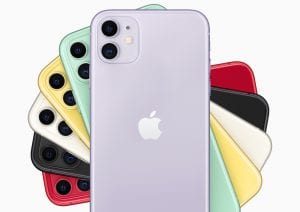Tech devices have become essential for travelers worldwide. I have 10 top tech tips for travelers to protect their personal information on them.
 Whenever you travel, whether domestic or international, technology can greatly enhance your journey. The smartphone, for example, will likely go down as the best travel tool since Bernard D. Sadow invented wheeled luggage. These tech tips for travelers really work. While technology has made travel easier, safer, and more enjoyable, it’s not without potential problems, some serious.
Whenever you travel, whether domestic or international, technology can greatly enhance your journey. The smartphone, for example, will likely go down as the best travel tool since Bernard D. Sadow invented wheeled luggage. These tech tips for travelers really work. While technology has made travel easier, safer, and more enjoyable, it’s not without potential problems, some serious.
Here are my top 10 tech tips for travelers that can be implemented immediately.
The smartphone is likely the top tech device available for travelers, but it needs to be protected to protect its contents.
1. Smartphone:
The smartphone is a great travel tool. I consider it essential for my trips. You can use it to maintain your itinerary and, if necessary, make changes to it on the go. It can receive important notifications from hotels, airlines, cruise ships, tour companies, etc. It can store digital copies of all your travel documents. Its camera can capture memories, receipts and important notes. It can even be a GPS to help you get around.
Smartphones, of course, are invaluable communication devices, able to text message and email, use the Internet for research and make and receive phone calls from most populated areas of the world. To me, they’re indispensable travel tools.
With all the private information stored on a smartphone you must keep yours secure. Make sure you turn its passcode on to securely lock it. Use the passcode option that allows the maximum passcode length. Be careful where you stow your smartphone when out and about. Forget stowing it in your back pocket, where a pickpocket can make it their own.
2. Important Documents:
Physical documents including identification documentation can be lost, stolen or damaged while traveling. I recommend scanning all your travel documents, including your passport, in case they are lost, stolen or damaged. Then you have quick access to them to use and/or facilitate their replacement, if necessary.
Store the documents in your smartphone, plus in a cloud data storage service, such as Google Drive or iCloud as a backup. Store them in Adobe Acrobat PDF format, which has become a universal standard. Password protect every document for your privacy.
Tech devices need power to work. It’s important to keep your devices charged safely.
3. Power:
Smartphones need power to work. Travel with a portable battery pack for charging when power outlets aren’t available, one that can fully charge your smartphone at least twice. If you’re charging your smartphone magnetically, ensure that your portable battery pack is compatible with your magnetic charger. Bring an appropriate cable to charge your smartphone without the magnetic system as a backup.
Make sure you have a USB charging cable that can charge your portable battery pack from your laptop computer or an alternate USB power source. Bring a multi-voltage power adapter that uses your USB charging cable to plug into a power outlet. If you’re traveling internationally, make sure you have an appropriate plug adapter for your destination(s).
4. Public Charging Safety:
Newer smartphones have improved security, but there may be unknown security flaws in it that could be exploited, so never charge your smartphone via a public USB charger or you could find your smartphone’s private information compromised. Use your own wall outlet charger or your portable battery pack while traveling.
VPN services along with antivirus and anti-malware apps are essential tech tips for travelers when connecting your tech devices to the Internet.
5. VPN Services:
Public Internet connections at airports, hotels and other locations aren’t secure, even ones that require a WiFi password. Unlike your home WiFi network, you can’t control who may use it. Some network users may be hackers attempting to steal your personal and private information.
Whenever you’re connecting to any public Internet service, use a VPN (virtual private networking) service. VPN services provide a software-based tunnel through the Internet that encrypts your data from the moment it leaves your connected device through its connection to your email service, websites, bank, credit card company, etc. VPN connections are virtually invisible on the Internet. Even if they are somehow found, they are very hard to follow, intercept, access or exploit.
Bonus: Don’t forget to use antivirus and anti-malware apps on your Internet enabled devices.
6. Governmental Surveillance and Streaming Services:
In addition to maintaining data integrity and privacy, VPN services provide other benefits for international travelers. VPN use masks your Internet location. Internet connections normally reveal the nation in which you’re located; however, if you connect through a VPN service, it will mask your true location and indicate you’re located in the country where your VPN server is located.
By masking your location, VPN services can help you avoid governmental censorship when traveling internationally. If you use a streaming service at home, you may already know that almost all don’t permit their use when you’re traveling internationally. By using a VPN server located in your home country, your streaming service will likely work because it will think you’re in your home country.
7. WiFi Auto-Connection Mode:
Disable auto-connect mode on your smartphone, tablet and laptop computer to prevent your device from indiscriminately connecting to public WiFi networks while you’re traveling. This will enable you to choose which networks you’ll use. Hopefully, each will have at least some security or trustworthiness. This will give you a chance to discriminate between legitimate networks and ones that are spoofing trustworthy networks.
Consider refraining from posting about your travels on social media in real-time. Don’t forget to take a full set of rental car photos before and after your rental for documentation.
8. Social Media Postings in Real Time:
It can be great fun to post your travel progress on social media while traveling. Unfortunately, thieves definitely troll social media for such posts. They want to find unoccupied homes that are an easy mark for theft.
Never post your home address in social media or photos of your home. Turn off your smartphone’s GPS locator when making photos at or near your home, or strip its location information before posting them on social media. In addition, wait until you’re home from your trips to post about them on social media. Don’t make it easy for thieves to make you a victim.
9. Rental Car Photos:
Too many times, rental car companies, even the big ones, try to make renters pay for car damages that didn’t occur while they were renting. In addition to requiring a rental car employee to note any existing damage to your rental car on the contract form before you leave the pick-up location, take photos of the exterior and interior as proof of any existing damage. Then do it all over again when you return the car. Make sure that when you return the car you take a photo of it with something in the background to prove it was returned to the rental lot.
Use common sense to protect your tech gear from theft.
10. Theft on the Go:
The best theft protection is common sense. I don’t understand people who place their smartphones on restaurant table-tops to monitor them for messages and emails while dining. Particularly when seated at a sidewalk cafe, it’s an invitation for snatch and grab thieves. If your phone’s in your bag, don’t sling the bag over the back of your chair or on the ground beside your seat. That’s another theft invitation.
These tech tips can make your trip easier, safer and more enjoyable. Protect your gear. Safeguard your identity. Be prepared, in case your critical travel documents are lost or stolen. Make the most of your tech devices.
READ ALSO:
Airplane seat issues are now out of hand
Want better customer service when you travel? You must be joking
After many years working in corporate America as a chemical engineer, executive and eventually CFO of a multinational manufacturer, Ned founded a tech consulting company and later restarted NSL Photography, his photography business. Before entering the corporate world, Ned worked as a Public Health Engineer for the Philadelphia Department of Public Health. As a well known corporate, travel and wildlife photographer, Ned travels the world writing about travel and photography, as well as running photography workshops, seminars and photowalks. Visit Ned’s Photography Blog and Galleries.



